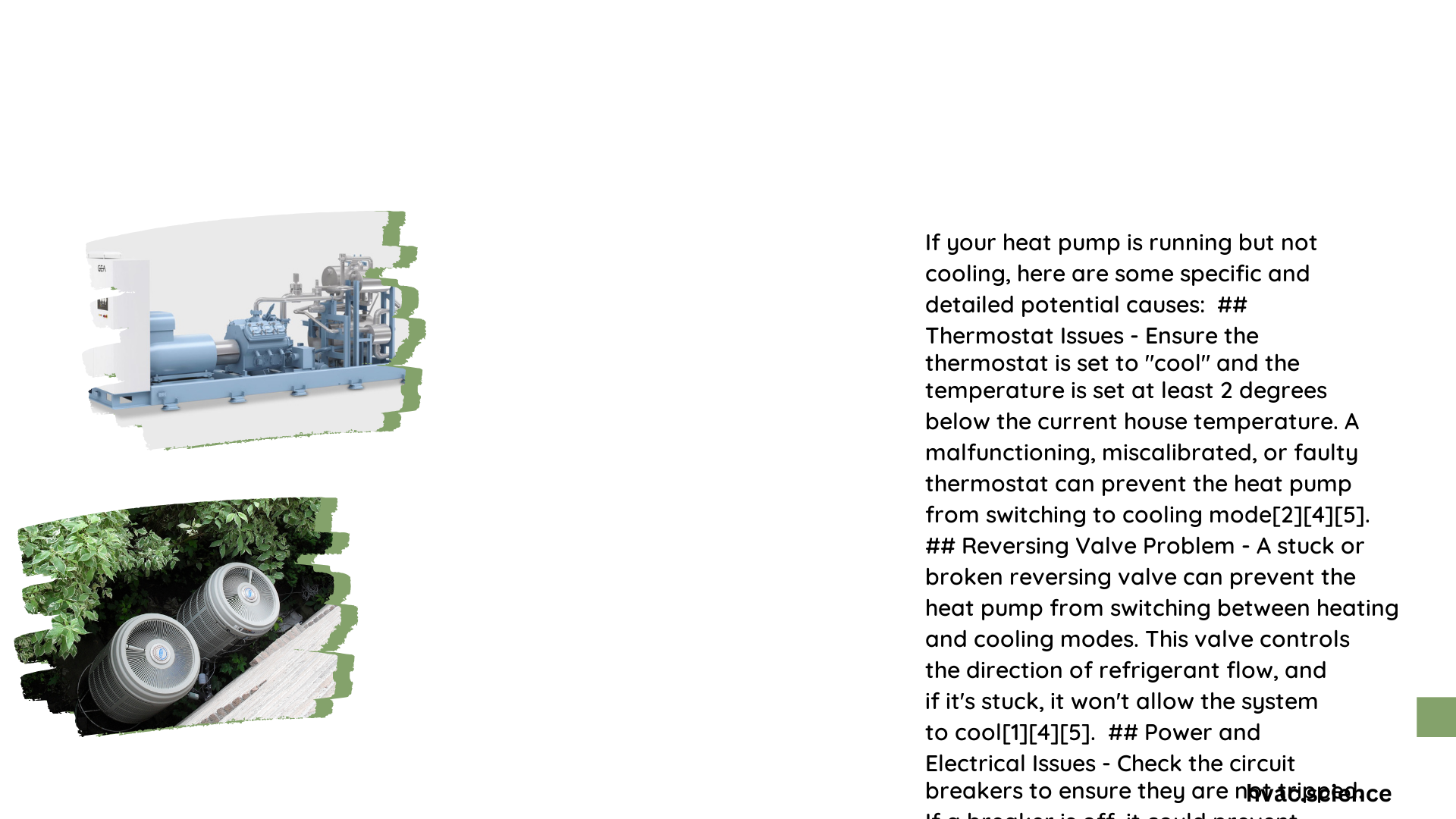A heat pump that runs but doesn’t cool can be frustrating and uncomfortable, especially during hot weather. This issue can stem from various factors, including thermostat problems, refrigerant leaks, or component malfunctions. Understanding the potential causes and troubleshooting steps can help you diagnose and potentially resolve the problem, or determine when to call a professional HVAC technician.
What Are the Common Causes of a Heat Pump Running Without Cooling?
Several factors can lead to a heat pump that runs but doesn’t cool:
- Thermostat issues
- Dirty air filters
- Refrigerant leaks
- Faulty reversing valve
- Blocked outdoor unit
- Electrical problems
Let’s explore each of these in detail.
Thermostat Problems
A malfunctioning thermostat can prevent your heat pump from cooling properly. Check the following:
- Is the thermostat set to ‘Cool’ mode?
- Is the temperature set low enough to trigger cooling?
- Are the batteries fresh (for battery-powered thermostats)?
- Is the display working correctly?
If you’ve verified these points and the issue persists, the thermostat itself may be faulty and require replacement.
Dirty Air Filters
Clogged air filters restrict airflow, reducing the system’s efficiency and cooling capacity. To check and replace the air filter:
- Locate the filter (usually in the return air duct or air handler)
- Remove the filter and hold it up to a light source
- If you can’t see light through it, replace the filter
- Install a new filter, ensuring it’s facing the correct direction
Regular filter changes (every 1-3 months) can prevent this issue and improve overall system performance.
Refrigerant Leaks
Low refrigerant levels due to leaks can significantly impact cooling performance. Signs of a refrigerant leak include:
- Ice formation on the evaporator coil
- Hissing sounds near the indoor unit
- Higher than normal electric bills
Refrigerant leaks require professional attention, as handling refrigerants requires specialized training and equipment.
Faulty Reversing Valve
The reversing valve is responsible for switching the heat pump between heating and cooling modes. A stuck or faulty valve can prevent proper cooling. Symptoms include:
- Heat pump blows warm air in cooling mode
- System works in heating mode but not cooling
Replacing a reversing valve is a complex task best left to professionals.
How Can I Troubleshoot My Heat Pump That Runs But Doesn’t Cool?

Follow these steps to diagnose the issue:
- Check the thermostat settings
- Inspect and clean/replace air filters
- Examine the outdoor unit for blockages
- Listen for unusual noises
- Check for ice formation on the indoor coil
If these steps don’t resolve the issue, it’s time to call a professional HVAC technician.
What Are the Operational Parameters of a Properly Functioning Heat Pump?
A properly functioning heat pump should maintain the following parameters:
| Parameter | Normal Range |
|---|---|
| Temperature Differential | 15-20°F (8-11°C) between indoor and outdoor coils |
| High-Side Pressure (R-410A) | 150-200 PSI |
| Low-Side Pressure (R-410A) | 50-70 PSI |
| Superheat | 10-12°F (5.5-6.7°C) |
| Subcooling | 10-12°F (5.5-6.7°C) |
Deviations from these ranges may indicate a problem requiring professional attention.
What Are the Costs Associated with Diagnosing and Repairing a Heat Pump?
The costs for diagnosing and repairing a heat pump can vary widely depending on the issue:
- Diagnostic visit: $75-$200
- Air filter replacement: $10-$50
- Refrigerant recharge: $100-$500
- Reversing valve replacement: $500-$900
- Compressor replacement: $1,500-$2,500
Labor costs typically range from $75 to $200 per hour. Most repairs take 1-3 hours, but complex issues may require more time.
When Should I Call a Professional for My Heat Pump Issues?
While some troubleshooting steps can be performed by homeowners, certain situations require professional intervention:
- Refrigerant leaks or recharging
- Electrical issues
- Compressor or reversing valve problems
- Persistent issues after basic troubleshooting
HVAC technicians have the tools, knowledge, and experience to safely and effectively diagnose and repair complex heat pump problems.
By understanding these common issues and troubleshooting steps, you can better maintain your heat pump and know when to seek professional help. Regular maintenance can prevent many problems and extend the life of your system.
References:
1. Douglas Cooling & Heating: Troubleshooting Cooling Issues
2. Air Pros USA: 5 Ways to Troubleshoot a Heat Pump
3. The Furnace Outlet: Heat Pump Troubleshooting
4. HVAC.com: Heat Pump Troubleshooting
5. Energy.gov: Heat Pump Systems
